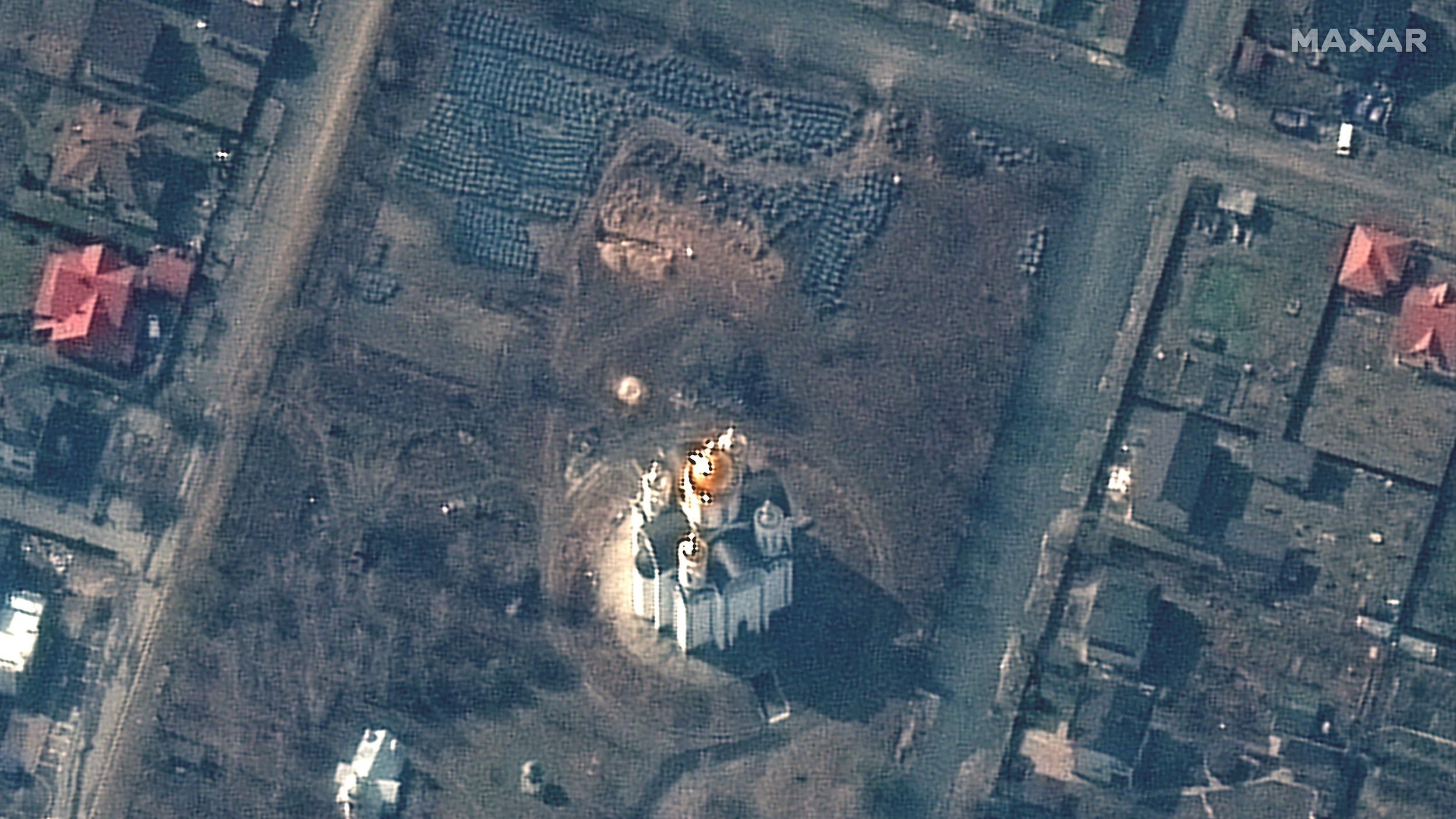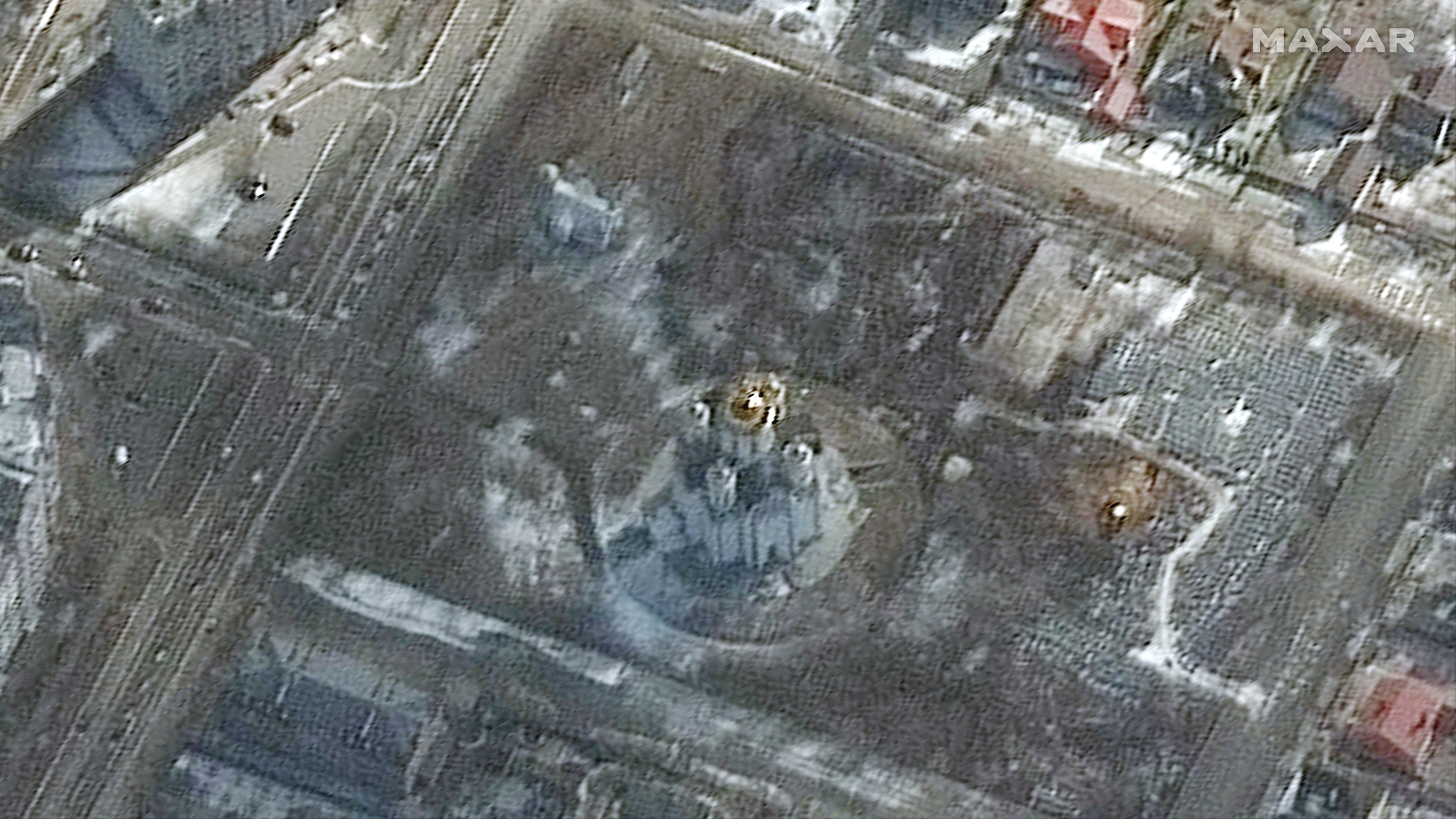How satellite technology uncovered evidence of a Russian massacre of civilians in Ukraine
The UN and Human Rights Watch have called for an independent investigation into the killings.


Satellite images have revealed what appears to be a mass grave and the bodies of civilians scattered in the streets of the Ukrainian town of Bucha. The images implicate Russian troops in a massacre.
Many of the images were taken during the Russian occupation of Bucha by Maxar Technologies' WorldView-3 satellite. They show that the bodies — some of which were discovered by eyewitnesses with their hands bound and with gunshot wounds to the head — could have been in the streets for as long as three weeks.
Another, taken on March 31, shows what is likely a mass grave on the grounds of a church, which includes a trench that is roughly 45 feet (14 meters) long, according to Maxar, a satellite company that produces "90% of the foundational geospatial intelligence used by the U.S. Government for national security and keeping troops safe on the ground," as well as the imagery for companies such as Google Earth and Google Maps. A previous Maxar satellite image, taken on March 10, shows what looks like the initial excavations of the grave.
Related: Ukraine invasion's impacts on the world of science: Live updates
The connection between Russian troops and the alleged massacre was documented over time thanks to the increasingly powerful satellite imagery available today. Maxar’s WorldView-3 satellite has a color image resolution of 12 inches (31 centimeters) according to Maxar’s website. That means that it can distinguish between patches of dark and light, and different colors, enough to pick out individual people, cars and other small objects. In contrast, earlier satellites, such as NASA's Landsat Imagers, have resolution down to 50 feet (15 meters) — enough to pick out environmental features such as lakes, forests and mountains, but not enough to identify people or small objects in an urban landscape, according to Maxar.
Maxar currently has four satellites in orbit, all of which are in sun synchronous orbits — a particular kind of polar orbit which enables an imaging satellite to orbit from pole to pole in a fixed position relative to the sun as Earth rotates beneath it. This lets the satellite constantly capture longitudinal slices of the parts of the planet where it is daytime.
Maxar’s WorldView-3 operates at an altitude of 383 miles (618 kilometers), and can also return to image the same patch of ground in less than a day. Its ability to revisit the same location effectively, however, is dependent on weather conditions, a Maxar spokesperson told Live Science in an email.
Sign up for the Live Science daily newsletter now
Get the world’s most fascinating discoveries delivered straight to your inbox.
This ability to recapture images of the same places very frequently is what helped the satellites tie the massacre with the town’s occupation by Russian troops. Of nine images taken on March 18th, 19th and 31st and provided by Maxar to Reuters, four of them appear to show bodies lying on Yablonska Street, a road in the town. Maxar also provided a separate set of images to The New York Times, which, after analyzing the pictures, wrote that it could confirm that the locations of the bodies on the ground were as they had been imaged by the satellite.
"We found mass graves filled with civilians. We found people with their hands and with their legs tied up and with bullet holes at the back of their heads," Sergey Nikiforov, the spokesman for Ukrainian president Volodymyr Zelensky, told the BBC’s Sunday Morning show on April 3. "They were clearly civilians and they were executed. We found half-burned bodies as if somebody tried to hide the crimes, but actually they didn’t have enough time to do it properly."
Ukrainian forces say they discovered the bodies upon entering Bucha, which is just 18.6 miles (30 kilometers) northwest of Kyiv, on Friday (April 1) after last week’s withdrawal of Russian units from the area.
In a Telegram post made on Sunday (April 3), the Russian Ministry of Defense denied responsibility for the killings, suggesting that the bodies had been placed on the streets after Russian units withdrew from the town around March 30. But the images taken by Maxar contradict this claim, showing that the civilian bodies lying on the streets, and the first mass grave being dug in the grounds of a town church, seemed to appear weeks before Russian troops withdrew from the town.
Both the UN and Human Rights Watch have called for independent investigations into what happened in Bucha, and Michelle Bachelet, the United Nations High Commissioner for Human Rights said in a statement that she was horrified by the images.
"Reports emerging from this and other areas raise serious and disturbing questions about possible war crimes as well as grave breaches of international humanitarian law and serious violations of international human rights law,” Bachelet said. "It is essential that all bodies are exhumed and identified so that victims’ families can be informed, and the exact causes of death established. All measures should be taken to preserve evidence."
Human Rights Watch says that it has documented several cases of members of the Russian military committing "laws-of-war violations" in Ukraine, including rape and summary killings.
Originally published on Live Science.

Ben Turner is a U.K. based staff writer at Live Science. He covers physics and astronomy, among other topics like tech and climate change. He graduated from University College London with a degree in particle physics before training as a journalist. When he's not writing, Ben enjoys reading literature, playing the guitar and embarrassing himself with chess.









